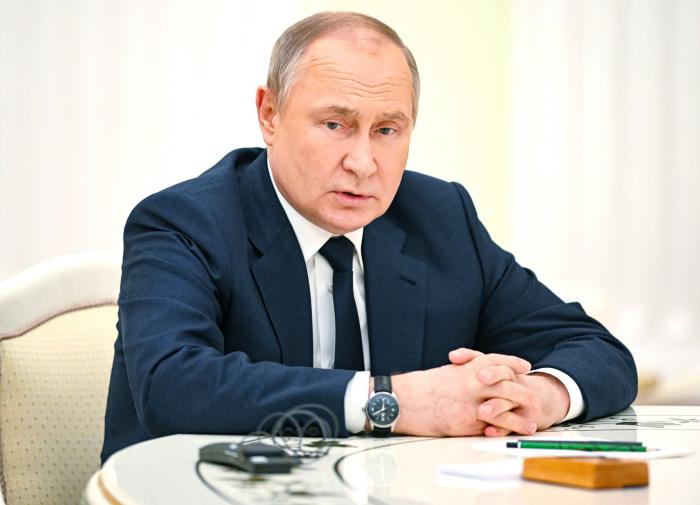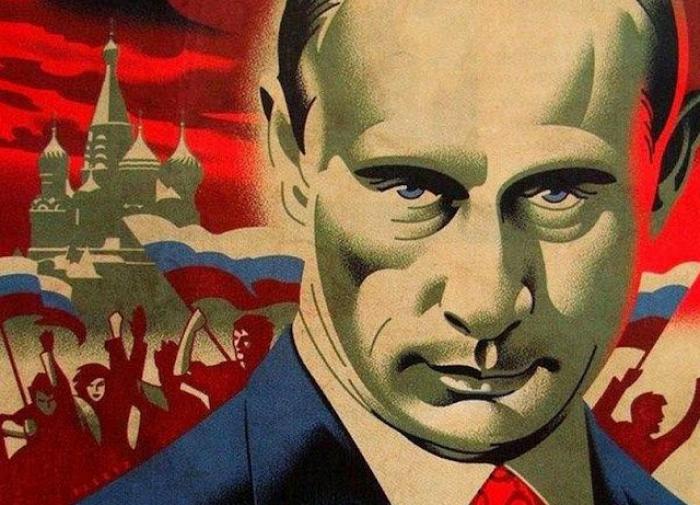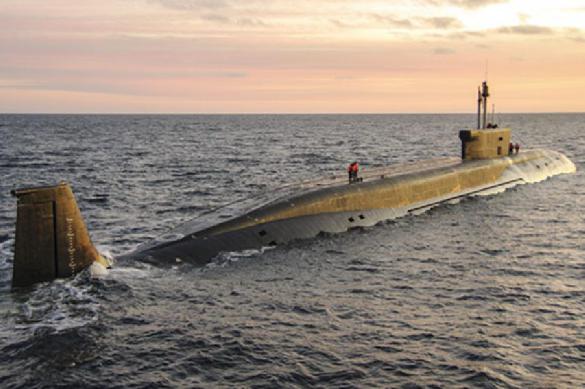[ad_1]
Might Russia be making ready to deploy its armed forces nearer to the US ‘homeland?’
Because the US refuses to halt the march of its NATO army bloc, in Japanese Europe, Moscow might leverage its ties with pleasant Latin American states to ruffle Washington’s feathers. However would such a plan of action be value it?
Cuba and Venezuela immediately made the headlines alongside Ukraine and the Baltics states after Russia made remarks about placing army {hardware} in Latin America. RT seems to be on the potential value of deploying Moscow’s forces in what the US counts as its “close to overseas,” “hemisphere” or “sphere of affect,” relying on whom you ask.
As Moscow and Washington negotiated safety preparations in Europe, Russian Deputy Overseas Minister Sergey Ryabkov made an announcement about Russia’s capabilities on the opposite facet of the pond.Amid strained relations even a really evasive assertion from Russia in regards to the prospects of deploying army infrastructure in Cuba or Venezuela was one thing of a bombshell for some observers.
“I don’t need to verify something, (…) or rule something out,” Ryabkov was quoted as saying in an interview with RTVI, a privately owned Russian-language tv community, final week. He emphasised that any escalation can be triggered largely by “the actions of our US counterparts,” including that President Vladimir Putin had often floated the concept Moscow would reciprocate, “if provocations towards Russia and army strain proceed to mount.”
Later that day, US Nationwide Safety Adviser Jake Sullivan made it clear in a press briefing that the subject will not be on prime of the agenda for President Joe Biden’s administration, however that Washington would undoubtedly reply to any makes an attempt by Moscow to ramp up its capabilities within the Americas.
“If Russia had been to maneuver in that course, we might cope with it decisively,” Sullivan stated.
An excessive amount of effort, too little sense
In dialog with RT, Ilya Kramnik, a researcher on the Middle for North American Research at IMEMO RAS, didn’t utterly rule out the deployment of Russian army belongings in Latin America. On the identical time, he believes that to date Moscow has no particular plans past diplomatic rhetoric.
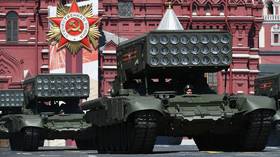
Initially, Russia would want the go-ahead from the management of the international locations involved, which, in line with specialists questioned by RT, will not be a slam dunk.
Mikhail Khodarenok, a army observer and retired reserve colonel, believes that the political management of Cuba and Venezuela is enthusiastic in regards to the Russian Overseas Ministry’s hints. Nonetheless, he fears that the governments in these international locations are very unstable.
“At this time, Venezuela has a pleasant president, Nicolas Maduro, and tomorrow it might be any person else. Change is slowly brewing in Cuba, too. And with the hypothetical deployment of our troops we’d face a predicament in case of a political reshuffle, and our arms might find yourself within the flawed palms,” he stated.
Cuba comes into play once more
Following Ryabkov’s assertion, the Embassy of Cuba in Moscow instantly got here strain to remark, however did not reveal something substantial. Havana’s diplomats defined that that they had no details about whether or not or not Russia’s army presence on the island was formally being mentioned, in line with the information company RIA Novosti.
Cuba served as one of many key battlegrounds throughout the Chilly Warfare between the erstwhile ideological rivals, the US and the USSR, again within the twentieth century. It’d even have turn out to be the setting for the outbreak of World Warfare III, and the 1962 standoff has gone down in historical past because the Cuban Missile Disaster.
It was the American resolution to station 15 medium-range Jupiter missiles in Turkey that prompted the escalation. The deployment got here on prime of inserting 30 US Jupiter IRBMs in Italy and 60 Thor IRBMs within the UK. Moscow responded by launching the covert Operation Anadyr to place troops and ground-based ballistic and tactical missiles in Cuba in June–October 1962.
Washington seen these actions as a direct risk to its nationwide safety and issued an ultimatum: the missiles needed to be eliminated instantly or a army intervention would happen. It’s broadly acknowledged that the showdown pushed the world to the brink of a nuclear battle. It was averted after Soviet and US leaders Nikita Khrushchev and John F. Kennedy hammered out a win-win deal: the missiles had been withdrawn from each Cuba and Turkey.
Khodarenok says that in 1962, the deployment made sense from each the operational and strategic viewpoint. In these days, the Soviet Union merely didn’t boast sufficient intercontinental missiles in its arsenal.
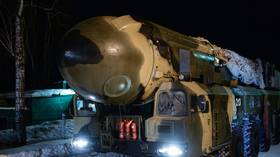
But in 2022, stationing everlasting Russian forces in Latin America is now not militarily or politically expedient, in line with Khodarenok.
“At the moment the Soviet Union positioned R-12 missiles with a spread of about 2,000 km in Cuba. It did make sense from a protection perspective. However in the present day all Russian nuclear missiles have a spread of 10,000 km,” Khodarenok added.
Begin it once more?
Between 1978 and 2002, Cuba hosted the Lourdes indicators intelligence facility, permitting Moscow to snoop on US communications satellites, ground-based telecom cables and the Florida-based NASA command middle.
Putin made the choice to close down the listening station in 2001, citing excessive bills. Nonetheless, analysts level to the truth that relations between the US and Russia had been a lot hotter again then, and abandoning this remnant of the Chilly Warfare might have been perceived as one more step to advertise higher ties. Twenty years later, Moscow entertains no illusions, and the sign of the potential return to Cuba could possibly be seen as fairly a believable plan.
In an interview with RT, Dmitry Stefanovich of the Middle for Worldwide Safety at IMEMO RAS defined that there wasn’t a lot left of the earlier spy publish. “Russia might certainly arrange an intelligence facility there. However what’s the purpose? Now we have sufficient spy websites throughout Russia. If there’s actually a powerful want for it, then it’s possible you’ll do it. However to date it does not likely make an excessive amount of sense. Simply to see an enormous Russian flag flying there? Nobody ever stated Russia’s protection capabilities had been dented after it was shut down in 2002. What is for certain, although, is that it was excessive upkeep,” Stefanovich stated.
Russia was recognized to provide Cuba with $200 million value of timber, gas, protection parts, and {hardware} spare components for the Cuban Military in trade for the lease on the power. Navy knowledgeable Kramnik additionally stated that it will be simpler to construct a brand new facility in Cuba relatively than restore the Lourdes base.
Is it value it
On prime of that, Russia might pay an unreasonably excessive worth ought to it attempt to set up a everlasting army risk to the US inside arm’s size of its borders, stated Stefanovich, including, “We merely wouldn’t have the assets to deploy something that may be of actual consequence. Say we deploy an anti-aircraft regiment geared up with S-400 [advanced missile] methods – after which what? We might additionally ship a brigade of Iskander missile methods over – however they’re objectively extra helpful to Russia within the European a part of the nation. Deploying strategic missile methods in America doesn’t make a lot sense both.”
Kramnik shares this viewpoint. “Sadly, Russia has only a few methods of making certain a long-term presence in, say, Venezuela. This has extra to do with our army capabilities relatively than with the prices. Positive, we might ship over a handful of ships carrying Zircon hypersonic cruise missiles – however solely as a one-off mission. We merely don’t have sufficient assets to keep up a everlasting presence there,” he stated.
That stated, specialists agree that deploying short- and medium-range missiles in Latin America could possibly be essentially the most promising resolution ought to the US and Russia fail to succeed in an settlement on safety points. Stefanovich, as an illustration, says that Russia might use the ground-launched sort of the Kalibr medium-range missile system.
Vasily Kashin, head of the Centre for Complete European and Worldwide Research at Russia’s Nationwide Analysis College Increased Faculty of Economics, famous that these missiles could possibly be delivered to Latin America by diesel-electric submarines or near-shore ships.
“They may get there on their very own, or be towed. This fashion, we might maintain the Individuals on their toes and make them spend further assets. There’s a second state of affairs – common visits to our strategic bomber bases within the area,” he says.
Khodarenok believes that Cuba and Venezuela might hypothetically host missile methods (Iskander-M), in addition to items and squadrons of long-range tactical aviation. Havana might additionally function a naval base, as it may well station floor ships and various kinds of submarines.
“All of this, nonetheless, would require an infinite quantity of monetary and materials assets. For instance, touchdown two Tupolev Tu-160 bombers at considered one of Venezuela’s airfields appears kind of real looking. However to station a long-range aviation unit there on a everlasting foundation can be a difficult proposition. To try this, we’d need to assemble further taxiways, construct a number of dozen parking tons for bombers, and create infrastructure for storing munitions and gas,” argued the previous Russian serviceman.
What are you going to do about it?
Nonetheless, on this case Moscow must cope with numerous different points, particularly in relation to safety.
“Say we try this, then the query arises: how can we guarantee correct safety of those methods? They’d require cowl each from the ocean and from the air. That may put an excessive amount of of a pressure on all kinds of assets: manpower, tools, cash. And, most significantly, the operation can be extraordinarily weak to exterior interference. Take the Khmeimim airfield in Syria, for instance – it may well turn out to be weak within the occasion of a critical battle with, say, NATO or Turkey, regardless that Russia has been creating army infrastructure there for years, sustaining air defenses and deploying coastal missile methods. And but, the bottom stays weak nonetheless. Think about what would occur ought to we try the identical throughout an ocean? It will be much more sophisticated,” defined Stefanovich.
Ought to Russia really resolve to deploy intermediate- and short-range missiles in Cuba or Venezuela, the specialists agree that the world might presumably face a brand new stalemate just like the 1962 Cuban Missile Disaster.
Stefanovich has recognized a minimum of 3 ways during which America might reply. The primary and the least costly choice is to include Russia utilizing US allies that share borders with it.
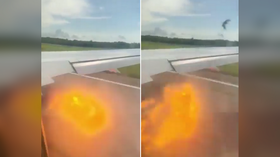
“Clearly, the Individuals would nonetheless have loads of convincing to do as a way to get their allies to oppose Russia. In any case, these are cheap folks: they understand they’re getting used as pawns to discourage a significant adversary of america,” he stated.
“As well as, the US might use diplomatic channels to place financial strain on international locations the place Russia deploys its missiles. It’s actually arduous to make the disaster in Cuba and Venezuela worse than it already is, however the Individuals might do it in the event that they needed to,” Stefanovich famous, considerably sarcastically.
“The US will definitely use threats to struggle the chance of Russian missiles being deployed near its borders. This might really feel just like the Cuban Missile Disaster once more – although maybe not on the identical scale. Even again then, Operation Anadyr didn’t go as easily because the Soviet Union had hoped: the USSR was in a position to deploy far fewer missile methods than it deliberate. Given the present state of the Russian Navy (together with Russia’s service provider fleet) and the extent of precision offered by trendy reconnaissance methods, it’s not possible to hold out such a deployment covertly – and if tried, it might have disastrous penalties for Russia. The US Navy and Aviation might simply stop Russia’s touchdown craft from reaching Cuba. An operation like this is able to be harmful, and it will improve the dangers of an escalation. There shall be no optimistic final result,” warned Stefanovich.
Based on Kashin, the Russian flag will assure the safety of potential places in Cuba and Venezuela.
“Attacking a Russian army base might escalate the scenario to a stage the place it may well now not be contained. Protection could possibly be strengthened to ensure that these bases usually are not destroyed by numerous proxy teams. Various guards and a few air protection would do the trick. Nonetheless, let’s not child ourselves – if the enemy decides to destroy this base, they are going to do it. The query is – would they dare provoke a nuclear energy?”
You at all times want the Navy
On prime of all of the concerns listed above, Russia nonetheless has a significant downside with its Navy. Its present capacities usually are not ample to ship ample army backup for political orders to function on the American continent.
Based on Kramnik, Russian army specialists appear to disagree whether or not the nation actually wants a Navy overhaul. There are those that don’t see any use in upgrading the Navy’s capacities until it serves an vital mission. Others, nonetheless, together with Kramnik, consider that Russia must maintain upgrading its Navy anyway, and the current case proves that past doubt.
“From time to time Russia finds itself in a scenario the place it does must have a powerful Navy to assist its political strikes, even hypothetical ones, like this Latin American presence state of affairs. Nonetheless, Russia’s Navy is at the moment less than the duty and gained’t be capable to assist a everlasting mission there. It takes many years to construct sufficient capability, which is why Russia has to plan long-term as a way to have the Navy it may well depend on in case of want,” argued Kramnik.
Then again, Colonel Khodarenok identified that the value for deploying a everlasting Navy mission to Latin America can be steep, because the continent has no ready-to-use infrastructure accessible for sustaining a substantial fleet.“Now we have to think about the capacities and whether or not they can serve the targets. Sending one ship over on a diplomatic mission is one factor. Sending over an entire naval division is one thing else solely. Let’s not overlook that such a mission would contain transporting all the fabric assist throughout the ocean too. This alone will make such a mission extraordinarily costly,” he concluded.
Kashin disagrees. He insists that Russia doesn’t have a powerful sufficient navy presence within the oceans or the assets to spend money on its improvement proper now. Nonetheless, he believes that it’s nonetheless doable for Russia to attain its targets. Based on the knowledgeable, a logistics assist base in Latin America could possibly be arrange with restricted investments.
“It will be sufficient for Russia to have a small base just like the one in Tartus, Syria, was once earlier than Russian troops got here there in 2015. It was only a fenced off house that had a pier, a number of depots and warehouses, and a diesel generator, with a number of technical specialists on website. The perimeter was guarded by the native army. An identical, however barely extra subtle base could possibly be arrange in Cuba or Venezuela, permitting Russian diesel-electric submarines to refill on provisions there and for the crew to have some relaxation. Then they might be capable to proceed with their mission for an extended time frame,” he believes.
Kashin thinks that in such a case, the US must waste loads of assets on monitoring Russia’s actions with the assistance of their nuclear submarines, huge floor ships or smaller LCS vessels. Even the latter choice would imply spending enormous sums on upkeep, to not point out that these 3,000-ton ships may show to be ineffective towards submarines.
“Russia’s objective is to not create an analogous form of risk to the US that it has created for Russia in Europe. Moscow’s assets are too restricted for that, so that may be not possible. What Russia is making an attempt to do is put strain on the US, drive it to extend its spending, and scale back the army risk that the US poses to Russia’s companions within the area, whereas on the identical time coaching their armed forces. This could inconvenience the US sufficient for it to rethink aggravating the scenario additional,” says the analyst.
It’s unclear whether or not Moscow is prepared to speculate this a lot in pursuing its targets within the US sphere of curiosity, even considering that it might show to be a significant hindrance to Washington. If Russia as soon as once more opts for Chilly Warfare techniques, it would inevitably need to face all of the challenges that the specialists are warning about – an escalation in Ukraine, an excellent worse standoff within the worldwide area and commerce wars. And it’s as much as Moscow to resolve whether or not or not it’s value it.
[ad_2]
Source link







